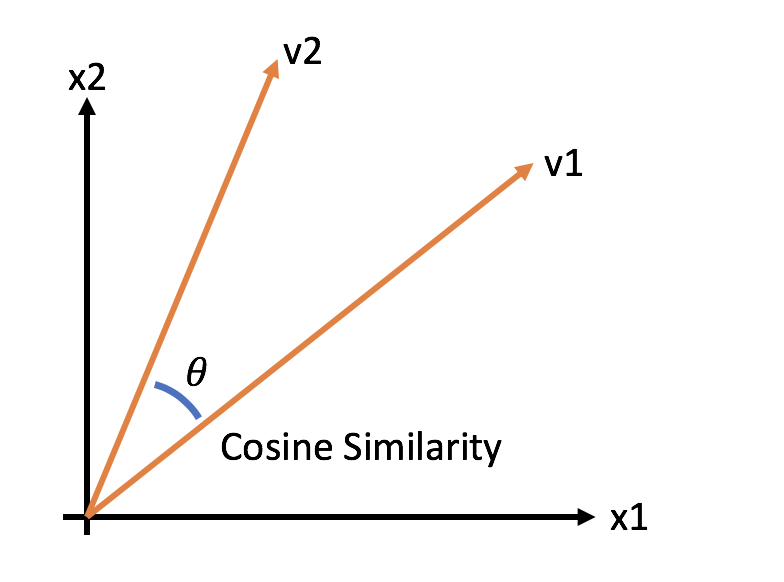Cosine Similarity
Introduction to Natural Language Processing in R

Kasey Jones
Research Data Scientist
TFIDF output
# A tibble: 1,498 x 6
X word n tf idf tf_idf
<int> <chr> <int> <dbl> <dbl> <dbl>
1 20 january 4 0.0930 2.30 0.214
2 15 power 4 0.0690 3.00 0.207
3 19 futures 9 0.0643 3.00 0.193
4 8 8 6 0.0619 3.00 0.185
5 3 canada 2 0.0526 3.00 0.158
6 3 canadian 2 0.0526 3.00 0.158
Cosine similarity
- a measure of similarity between two vectors
- measured by the angle formed by the two vectors

1 https://en.wikipedia.org/wiki/Cosine_similarity
Cosine similarity formula
- similarity is calculated as the two vectors dot product

Finding similarities part I
crude_weights <- crude_tibble %>%
unnest_tokens(output = "word", token = "words", input = text) %>%
anti_join(stop_words) %>%
count(word, X) %>%
bind_tf_idf(word, X, n)
# A tibble: 1,498 x 6
X word n tf idf tf_idf
<int> <chr> <int> <dbl> <dbl> <dbl>
1 1 1.50 1 0.25 3.25 0.812
2 1 16.00 1 1 3.25 3.25
3 1 barrel 2 0.133 3.25 0.433
...
Pairwise similarity
pairwise_similarity(tbl, item, feature, value, ...)
- tbl: a table or tibble
- item: the items to compare (articles, tweets, etc.)
- feature: column describing the link between the items (i.e. words)
- value: the column of values (i.e. n or tf_idf)
Finding similarities part II
crude_weights %>%
pairwise_similarity(X, word, tf_idf) %>%
arrange(desc(similarity))
# A tibble: 380 x 3
item1 item2 similarity
<int> <int> <dbl>
1 17 16 0.663
2 16 17 0.663
3 13 10 0.311
4 10 13 0.311
...
Cosine similarity use-cases
- find duplicate/similar pieces of text
- use in clustering and classification analysis
- ...
Let's practice!
Introduction to Natural Language Processing in R

